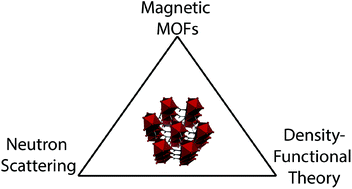Probing magnetic interactions in metal–organic frameworks and coordination polymers microscopically
Abstract
Materials with magnetic interactions between their metal centres play a tremendous role in modern technologies and can exhibit unique physical phenomena. In recent years, magnetic metal–organic frameworks and coordination polymers have attracted significant attention because their unique structural flexibility enables them to exhibit multifunctional magnetic properties or unique magnetic states not found in the conventional magnetic materials, such as metal oxides. Techniques that enable the magnetic interactions in these materials to be probed at the atomic scale, long established to be key for developing other magnetic materials, are not well established for studying metal–organic frameworks and coordination polymers. This review focuses on studies where metal–organic frameworks and coordination polymers have been examined using such microscopic probes, with a particular focus on neutron scattering and density-functional theory, the most-well established experimental and computational techniques for understanding magnetic materials in detail. This paper builds on a brief introduction to these techniques to describe how such probes have been applied to a variety of magnetic materials starting with select historical examples before discussing multifunctional, low dimensional and frustrated magnets. This review highlights the information that can be obtained from such microscopic studies, including the strengths and limitations of these techniques. The article then concludes with a brief perspective on the future of this area.

- This article is part of the themed collection: 2018 Frontier and Perspective articles


 Please wait while we load your content...
Please wait while we load your content...